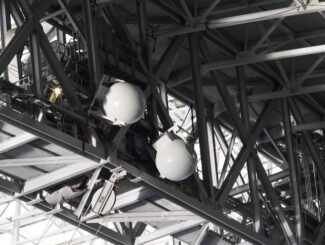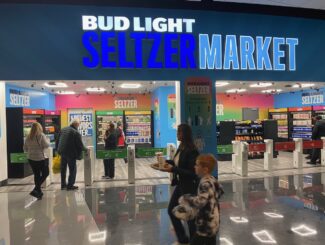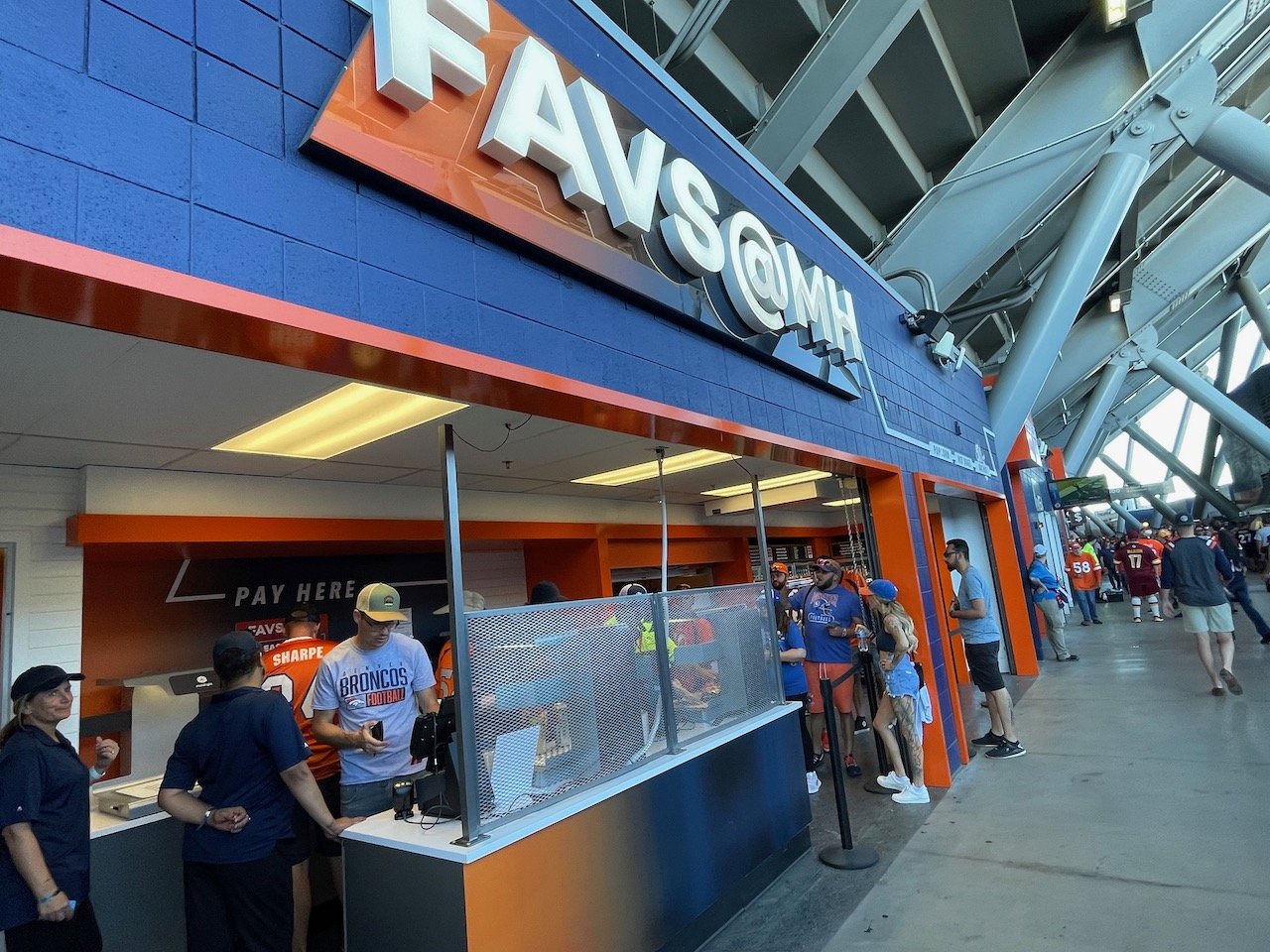
Even before Zippin, fans at Empower Field at Mile High got introduced to new concessions technology several years ago when a curious machine appeared at the checkout area of some stands. Instead of a staffer behind a terminal, the new devices were a platform surrounded by metal bands above and on the platform’s sides. What fans were instructed to do was to put their items on the platform, where they would be scanned by cameras and would instantly show up on the screen of the attached payment device.
Provided by a Palo Alto, Calif.-based startup named Mashgin, the scanners provided a fun and faster way for fans to get a few simple items, like canned drinks or grab-and-go snacks, than waiting in long belly-up lines. With devices now in more than 70 stadiums throughout the U.S., according to the company, the Mashgin scanners continue to win fans both from attending customers as well as from venue operations teams. At Empower Field at Mile High, there are 20 Mashgin scanners in use, spread out across six different concession stands.
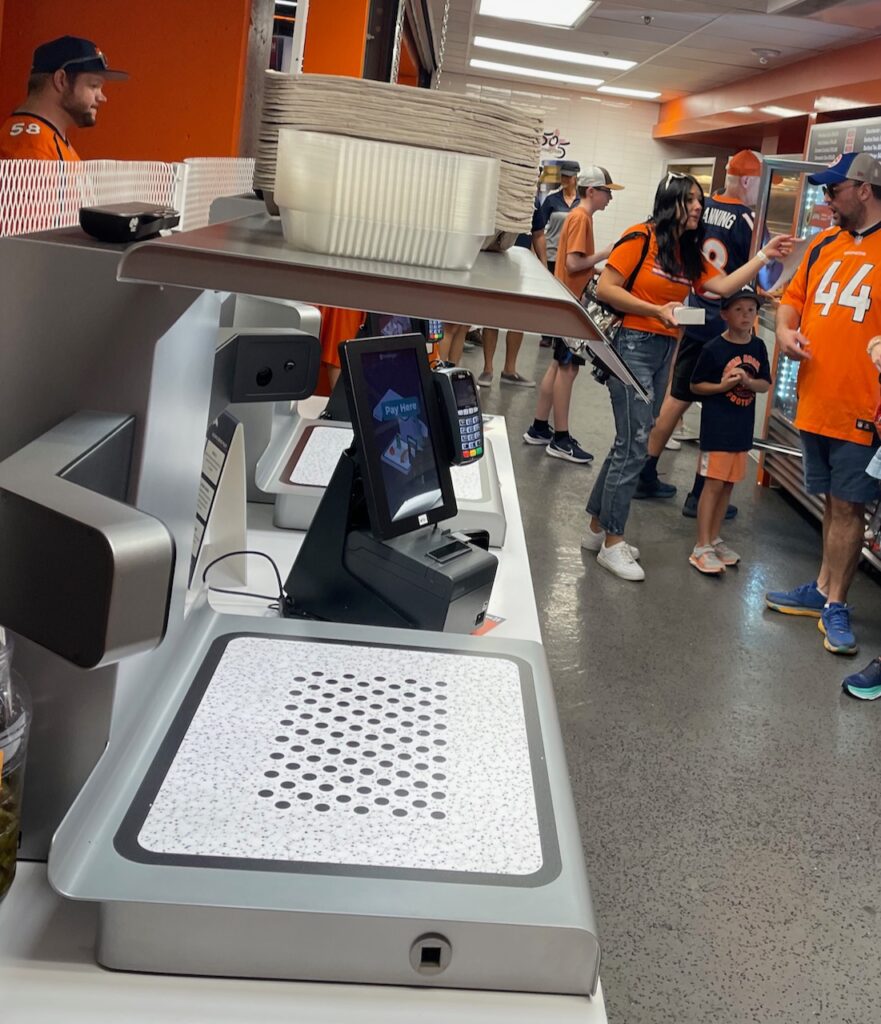
Like other technologies that supported contact-free transactions, Mashgin terminals got a big lift when fans returned to stadiums after the Covid pandemic. While previously fans might have eschewed self-serve devices, in the return after Covid fans embraced them wholeheartedly. Though exact numbers are hard to come by, venues with Mashgin deployments generally talk of big-percentage lifts in overall transactions and per-cap spending at stands that use the devices to replace traditional checkout formats.
New venues embracing Mashgin devices this football season include the university stadiums at Alabama, Texas and Auburn. The social media team at Auburn posted a fun video of the Auburn Tiger mascot showing how easy it was to use the devices for concession checkout. Like Zippin, Mashgin allows venues to replace the traditional cashier checkout with formats that allow customers to select their own items, then do the pricing and checkout with (hopefully) minimum assistance.
The two other things that make Mashgins an attractive option to venues are the devices’ costs, and their deployment flexibility. Unlike the Zippin or Amazon Just Walk Out stores, which can cost into the hundreds of thousands of dollars to deploy depending on the size and real estate used, the Mashgin scanners are comparatively less expensive and can be moved around as needed to different stands, needing only power, a network connection, and a flat spot to put the device on.
What the Mashgin scanners do call for is more customer work than a checkout-free store, since customers must still check out themselves. And even though we saw some clear Mashgin veteran users during our visit to Empower Field at Mile High, many other fans were obviously encountering the devices for the first time and needed staff assistance to complete the checkout journey.
Speeding up the simple transactions
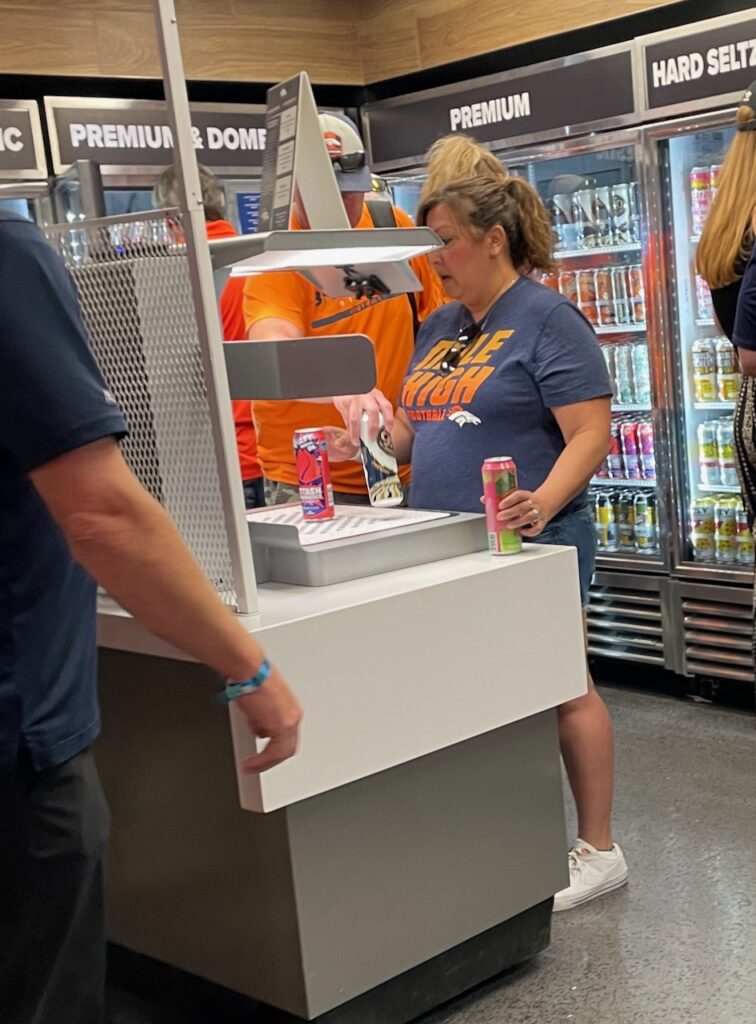
At one stand, we saw a Mashgin power user wave off the offer of help from staff, and purchase two beverages quickly, spending just 21 seconds to place his items on the device, tap a card to the payment device, open his cans and have his ID checked by the staffer. Another fan at the same stand needed a bit more help, with the staffer showing how the items needed to be spaced a bit apart so the cameras could pick up each one. That transaction, which included the ID check/can opening and the fan using their phone to pay for the purchase of two beers and a box of popcorn, took 46 seconds from when the fan arrived at the terminal. That time was in addition to the time spent selecting items, which we did not measure.
In other live-game situations we have witnessed, where we have seen Mashgin scanners struggle a bit is when fans try to check out a large number of items that may not all fit on the pedestal at once. According to the company, it is working on a fix that will allow a customer to scan one set of items and then press a button on the screen to allow for another set to be scanned before entering payment information.
In Denver, we also saw numerous short delays during Mashgin checkouts when fans would get confused by the overall process, especially since the order of scanning, paying, having an ID check and opening cans before you are finished seems to vary not just by stand but by staffer. These delays seemed less about the Mashgin devices and more about the layout of the stands and the timing of the ID checks.
Again, there are not a lot of statistics to exactly measure performance but both company execs and venues that have the devices are convinced that in the right situation, Mashgin scanners can offer a distinct time advantage over cashier checkouts or even other self-scan devices like bar-code readers. And the ability to move the Mashgin devices around from spot to spot is likely a big selling point especially for heavy-use venues that often have different event-day setups.
For now, the Mashgins are a valuable tool in the Empower Field at Mile High concession quiver, with more stadiums following that lead.
“There’s a place for all the technologies [in concessions],” said Brandon Scott, head of sports for Mashgin. “We’ve carved out a spot.”
Next: Part 3: The rise of the self-checkout kiosk
Editor’s note: This post is part 2 of our four-post report on the concessions technology in use at Denver’s Empower Field at Mile High. To go to the start of the report, click here. You can also download a PDF of the full report, with more photos.




